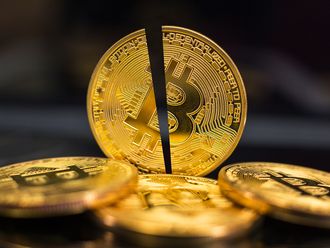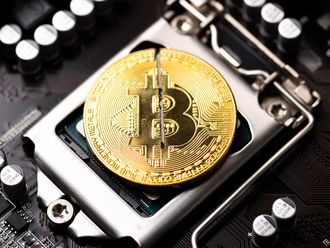Conversations about Bitcoin and cryptocurrencies continue to proliferate, even as prices of most continue to fall. I have been asked to repeatedly comment on the trend and I reiterate these opinions are mine and mine alone and bear no legal value.
I am no expert in the field of cryptocurrencies, and just like others, marvel at the pace of human innovation, even as I remain crestfallen as to how gullible investors get, despite regulatory authorities issuing repeated warnings. That being said, let me elucidate as to why I hold the opinions that I do.
A bubble in any market occurs when someone takes money (either equity or debt), and moves it from the asset side to the income side. When this happens, the underlying asset and/or business appears to be far better than it actually is. Every time this happens, the story eventually ends in tears because at a point in time, the illusion bursts.
This is often because there is no more money left to move from the asset side to the income side. From the South Sea bubble and Tulip mania to the Souq al Manakh in Kuwait, these were bubbles created when wealthy traders were manipulating balance-sheets to raise asset prices and create a buying frenzy. Even when we look at the dotcom and the real estate bubbles, monies were raised — often from an incredulous public — and debt added for good measure.
These were hedged against a balance sheet of a large conglomerate; (AIG for the sub-prime crisis and in the case of the dotcom bubble, the most famous example is AOL. Predictably, others rushed in to copy the scheme and for a while, it created income for investment banks and the underlying companies they were raising money for.
Eventually, the money ran out when people realised the “income” being created was actually debt (an asset). And so, financial gravity eventually exerted itself and prices came crashing.
Why does history keep repeating itself? Because we are always looking for something new; and bubbles are often created when the frontiers of finance meet the frontiers of technology. It’s always a new world that accompanies these asset bubbles according to the zeitgeist of the time.
This time it’s blockchain and the fact that currencies are too expensive to maintain and too slow to react in the new world of fintech. If you look at the data, the rise in the prices of bitcoin was accompanied by market manipulation and hacking. A phenomenon that continues, despite the fact that bitcoin has fallen by more than 60 per cent in the last six months, and many cryptos have become worthless.
Despite this, the number of ICOs continue to proliferate, and my office is inundated with breathless investors asking me as to what my opinion is on each new offering. Monies raised from these offerings are up by more than 500 per cent this year, making it apparent that people continue to chase the chimera of becoming rich overnight, and even as the market mutates to include ever new offerings such as asset-based and commodity- based tokens.
There was even one that I saw where tokens were being issued based on the number of likes of your favourite celebrity.
The underlying excitement is unsurprising even if the end is predictable: financial gravity will eventually assert itself because the creation of these currencies still remain in unsophisticated jurisdictions. Their underlying pricing movements highlight the fact that they are open not only to hacking, but also to market manipulation.
Someone clearly is making money, but it’s not the median investor. Ironically, the man who discovered the laws of gravity could not understand the workings of markets and himself was a victim of a financial bubble, losing the equivalent of millions of dollars in the South Sea Bubble.
Experimentation is a fundamental part of our society. It is good that there are experiments taking place in the fintech world and these need to be nurtured. The ADGM has been in the forefront of nurturing this in recent months.
But there is a reason why we have laws in place, and even as the latest generation of entrepreneurs rubbish the existing framework claiming that the regulatory framework is too “old school” — they are even right many a time — the spirit behind these laws is to protect Ponzi schemes from harming society.
A “caveat emptor” was the rule of the day for a large part of the last 200 years, and society has moved towards caveat vendor (let the seller beware). We need to ensure that there is a balance between the two.
Regulation is by definition slower than technological innovation because it has to protect its stakeholders rather than fall for the latest fad. But it does do its job.
Meantime, we should learn the rules of financial gravity: when a thing goes parabolic, it has no choice but to eventually fall back to earth. This is a lesson being learnt most painfully in the cryptocurrency space.
Nasser Malalla Ghanem is Senior Partner at NM Associates, which is a joint venture with GCP Group.












